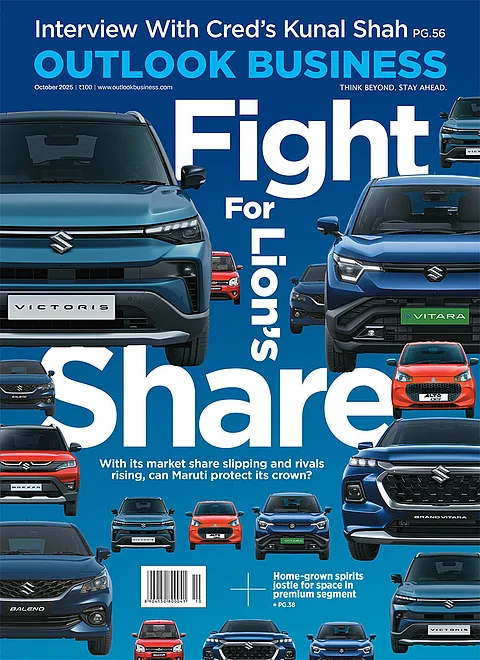What is it that makes animal migration such a magnificent spectacle for the eye and the mind? Is it the sheer abundance of wildlife in motion? Is it about the steep odds that need to be overcome? Or is it about the amazing feats of precise navigation? The answer is all of the above. But there’s another reason why the long-distance journeys of wildebeests, zebras, Sandhill cranes, monarch butterflies, sea turtles and so many other species inspire our awe. A non-scientist, risking anthropomorphism, might say, ‘Yes, they have a sense of a larger purpose’. Animal migration is a phenomenon far grander and more patterned than animal movement. Migrating animals maintain a fervid attentiveness to the greater mission, which keeps them undistracted by temptations and undeterred by challenges that would turn other animals aside. It represents collective travel with long-deferred rewards.”
You might be wondering what this passage from National Geographic magazine has got to do with investing. Interestingly, this phenomenon of migration has a lot of commonality with a few companies that have chosen to migrate up the value chain, embracing a long grind with back-ended rewards. KRBL and its management team exemplify many such characteristics.
KRBL has had three generations of involvement with the aromatic basmati grain. With a milling capacity of 195 metric tonne an hour, KRBL is the largest rice miller and basmati exporter in the world. It is an integrated player with deep involvement in every aspect of the basmati value chain, right from seed development to modern farming procurement, grading, processing, aging, packaging, branding and marketing. It accounts for more than 30% of the domestic branded basmati rice market and 27% of the total branded basmati exports from the country. Its domestic sales comprise 55% of total sales, the rest of it being exports. It has leadership positions in the markets of Saudi Arabia, Kuwait, Qatar, UAE and Australia.
The company is also involved in other aspects of the value chain. It produces value-added products such as rice bran oil and non-conventional power made using rice husk as feedstock. (see: Optimum value). The company is also able to generate power from renewable sources such as wind and solar thanks to the technology available with it. KRBL currently has a warehousing capacity of close to 0.5 metric tonne (MT) of rice and 1 MT of paddy, placing it in an enviable position to harness India’s unique geographical advantage in the production of Basmati rice across the world.
India’s competitive advantage
The world produces 475 MT (milled basis) of rice (including basmati) and the global trade is around 41 MT, with closing inventory of 102 MT in 2014. The world production has grown by 1%, consumption by 3% and trade by 8% over the past five years. In addition to Pakistan, India has the unique distinction in the world of producing basmati rice. India produces 105 MT of rice (including 7.5 MT of basmati rice) and exports around 10 MT, including 3.7 MT of basmati rice. We are the largest exporter of rice, followed by Thailand, Vietnam and the US.
What makes basmati rice unique is that it has distinctive and pleasant aromas and long slender grains, and on cooking sees both extreme grain elongation and dry fluffy texture. Not surprising, then, that basmati exports have grown at CAGR of more than 25% over the past five years, touching 3.7 MT, even as exports from key competitor Pakistan have remained constant at 2.5 MT till last year. The company has harnessed this unique geographical advantage of India and created a moat in the business, which makes it a formidable player in the global and domestic basmati rice industry.
KRBL has distinguished itself by nurturing brand basmati over the years. Its India Gate rice brand and its variant are the premium brands in the country. The flagship brand accounts for more than 140,000 tonne, more than 25% of volume sales and 40% of value of the company. What gives it that premium feel is that the brand is backed by years of experience of milling and ageing of rice by 18 months, as against one year for other variants.
That explains why the company carries huge inventory of 225 days. This ageing of rice (inventory of finished goods) is a key ingredient of India Gate’s success. Unlike competitors, the company has never compromised on the attributes of the brand.
The other competing brands in the market are Dawat, Lal Qila, Jagat, Amira, Heritage, Maharani and Fortune. The India Gate brand accounts for more than one-third of the industry size and is growing more than 15% every year against market growth of 7-9%, and this despite its premium pricing of 15% over its competitors (see: Top class). The business is supported by 95,000 farmers engaged through contract farming, 490 domestic dealers, 40 international dealers and 690,000 retailers across India exporting to 33 countries across the world. It has gained significant traction due to the increasing penetration of modern trade, rising consumerism, upgrade from normal rice to basmati and the introduction of smaller packs of Basmati.
We expect the domestic basmati market to grow at more than 10% per annum and India Gate to command dominant share of this segment. The pricing power of the brand is very well demonstrated as it has always maintained an upward pricing trajectory despite the volatility of paddy prices over the years. Besides, its 18-month process of rice ageing ensures superior quality of rice to consumers. Rice as a commodity has witnessed price volatility but the India Gate brand has witnessed upward pricing trajectory due to the trust reposed by its consumers. The company has spent ₹200 crore on advertisement and other ancillary expenses over the past decade for creation of these brands. Inarguably, India Gate has emerged as one of the top food and agri FMCG by revenue in the world.
Fortifying position
Overall rice production has grown at a CAGR of 3.3% and there has not been much change in acreage in India, while basmati production has grown more than 20% over the years. The prices of basmati paddy have fluctuated over these years from ₹20 in FY11 to ₹40 in FY13 to about ₹28 for the current season. The company has taken a special interest in expanding the market by supporting high-yield varieties of basmati paddy PUSA 1121 and latest entrant PUSA 1509, another variant. PUSA 1121 improved yield by 25% over traditional basmati, while the new introduction, PUSA 1509, has improved it by further 25%, thereby expanding the production of basmati paddy. PUSA 1509 is short-duration crop that conserves water and protects the crop from waterlogging and shattering.
The company has 250,000 acres under contract farming, involving 95,000 farmers, and it encourages them to plant new seeds and technology. (see: Having a field day) The company in fact provides 35% of all basmati seeds in the country. This has not only improved the income of farmers but has also helped the company to offer better quality rice to consumers. The current minimum support price (MSP) for rice is ₹14 and has increased by 36% over the past five years. However, basmati paddy is procured at much higher prices than the MSP, thus ensuring good quality and consistency. As a result, the management has been able to nurture a vibrant ecosystem of farmers and, in turn, create a stronger moat around its business.
Among animal species, the zebra holds the unique distinction of travelling the farthest distance — 500 km — during migration in Africa. It is very easy to fall prey to the theory that all zebras look alike and, hence, one cannot be distinguished from the other. However, the fact is that each zebra has a different general pattern of stripes that makes it unique. Same is the case while investing in the rice sector. The malpractices of a few players — compromising the quality of product, pricing of raw material, including the over-valuation of inventory to misguide lenders, and misallocation of capital — over the past few years have put off shareholders from investing in this sector. This has also masked KRBL’s success over these years.
Over the past four years, the company has seen a revenue growth of 22% and operating profit growth of 25% — higher compared with its peers. Against such a backdrop, the management’s plan to achieve ₹4,000 crore in sales by FY16 looks very credible. The high return on equity of 27-30% also suggests brand power in a nondescript and highly commoditised business. It has very comfortable financial position and the balance sheet is leveraged only to the extent of working capital. It has also leveraged the use of husk, a by-product of rice milling, to generate renewable power of 15.8 MW businesses. It generates 50.1 MW from wind and 14.7 MW from solar. This has helped in diversifying earnings and building a long-lasting renewable portfolio of 80 MW till date. The current value highly underrepresents the business value created by the company’s management over these years.
To conclude, here’s another extract from National Geographic. “Once, a biologist named Hugh Dingle, striving to understand the essence of migration, identified five characteristics that apply, in varying degrees and combinations, to all migrations. These are prolonged movements that carry animals outside familiar habitats; they tend to be linear, not zigzag; they involve special behaviours of preparation and arrival; all these demand special allocations of energy.” KRBL’s management, led by Anil Kumar Mittal, has successfully taken the 120-year-old firm on the path of value migration.












 Just one email a week
Just one email a week